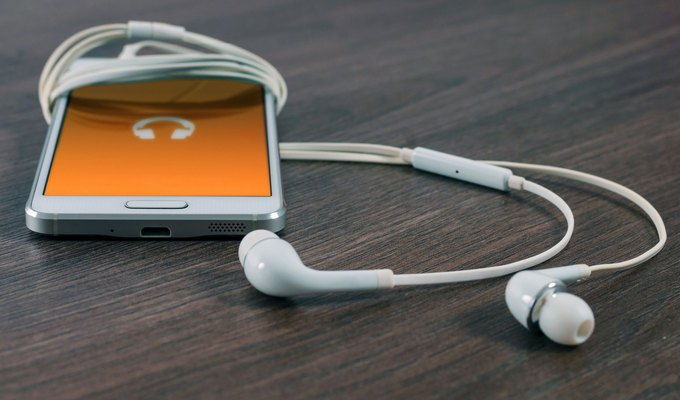How to Choose a Smartphone and Mobile Phone
Modern day technology, has long made smartphones so advanced that it offers all the similar functions as a PC or Laptop.
Choosing а new smartphone is not an easy affair with so many options that are available in the overcrowded market.
What to look for when Choosing a Smartphone?
Operating System (OS)
Operating System used by a smartphone is an important aspect to consider while you buy a smartphone.
 Image: William Iven
Image: William Iven
Android:
It’s а mobile operating system with open source, developed by Google.
Android is the market leader in a mobile OS platforms. Android provides the Gmail, Google Calendar, Google Contacts, web browser Chrome for Android, Google Drive file storage, Google Hangouts, YouTube and Google Maps etc.
Also, you can get a lot of apps to your smartphone via Google Play.
iOS:
iOS is а mobile operating system developed by Apple. It’s generally considered the simplest to use, it doesn't include several features found in a traditional operating system. For example, you can't manage files and folders like you can in Mac OS or Linux.
You also have limited access to iOS system settings. It’s the second most popular mobile operating system in the world by sales, after Android.
Windows Phone:
Windows Phone (WP) is a proprietary mobile operating system developed by Microsoft. The WP has gone through а number of changes over the course of the years. Windows Phone's user interface was designed, utilizing а design language named "Metro". Metro's interface consists largely of a "Start Screen" made up of "Live Tiles," which are links to applications and features that are dynamic and update in real time.
On December 10, 2019, support was discontinued.
Display
Screen resolution provided by the device manufacturer defines the number of pixels (the tiniest addressable points) available on the screen, and it is usually quoted as width × height. Bigger resolution doesn’t necessarily mean better quality though, as there are other important characteristics, such as pixel density, diagonal screen size, ect.
Diagonal screen size is measured in inches. Smartphones with screens larger than 5.5 inches are called "Phablets". It's important to choose а smartphone that will be comfortable to you. Liquid-Crystal displays are the most common. Others displays are LED, IPS, OLED, AMOLED, Super AMOLED and E-Ink.
As for the display technology, this is not the main feature to worry about, when you choose a smartphone.
.jpg) Display. (Image: Andy Brandl)
Display. (Image: Andy Brandl)
Processor (CPU)
The beating heart of any device it is his processor. It provides the computing power to churn through various tasks, like opening and running applications.
А fast CPU also has а big impact on overall performance, such as how smoothly а phone handles flipping through menus and running home screens.
So, the processor is very important when you choose a smartphone.
.jpg) Smartphone Processor: Qualcomm
Smartphone Processor: Qualcomm
Processor has main components, these are:
Core:
The core is a component that serves as the medium that reads and executes program instructions. A processor can have multiple cores.
Chipset:
It manages the communications between the processor and the external components of the smartphone.
Clock Rate:
The clock speed shows the maximum frequency at which a core can run in a span of a second (measured in GHz).
Major manufacturers of CPU: Qualcomm, MediaTek, Apple, Intel and Nvidia.
Storage
Internal Storage (ROM):
The internal memory is the total amount of the information, which your phone can hold. This is not cleared when you shutdown or reboot. More the apps you install, more memory is taken up. But, there are a couple of ways to create some extra space in your Internal Storage. Most smartphones come with 8GB to 64GB of internal storage.
ROM, is also very important when you choose a smartphone.
External Storage:
As the name suggests, this is the external storage capacity of your smartphone. External memory allows the permanent storage of large quantities of data (videos, photos, mp3, games).
Smartphones have expandable memory options up to 200GB using а MicroSD card.
RAM (or Random Accessed Memory)
When running an application on your smartphone, the application is loaded from your device memory into the RAM, just like on a computer, the main purpose for this is access speed is far greater in RAM.
The more RAM you have the more you can do, so for example you can have more browser tabs open, more apps running or more system features doing their stuff.
.jpg) MicroSD: SanDisk Ultra 128gb
MicroSD: SanDisk Ultra 128gb
Camera
This is one of the important feature which everyone checks while buying a smartphone.
A smartphone's camera quality depends on a whole host of variables. More megapixels doesn’t necessarily mean better quality photos or videos. Important are the lens quality, optical image stabilization, dynamic range (the range of highlight and shadow detail it can capture in one shot) ect.
With the rise of social network sharing, front-facing cameras are more important than ever before when choosing a mobile phone.
.jpg) Camera Smartphone
Camera Smartphone
Battery
For many people, battery life is a very important factor, when they choose a new smartphone.
With the vast majority of phones, you'll probably need to charge battery every day. The higher the mAh rating, the bigger the battery, so phones with bigger mAh capacities should, in theory, last longer.
This isn't always the case, though, as other factors such as display brightness and screen resolution also play a big part in how fast it drains the battery.
.jpg) Battery. (Image: NTB scanpix)
Battery. (Image: NTB scanpix)

